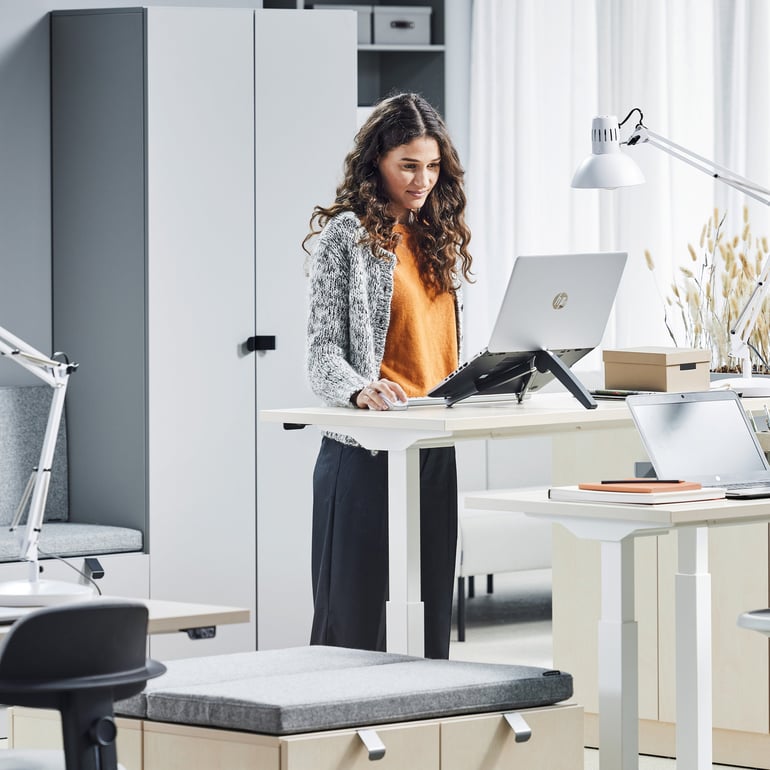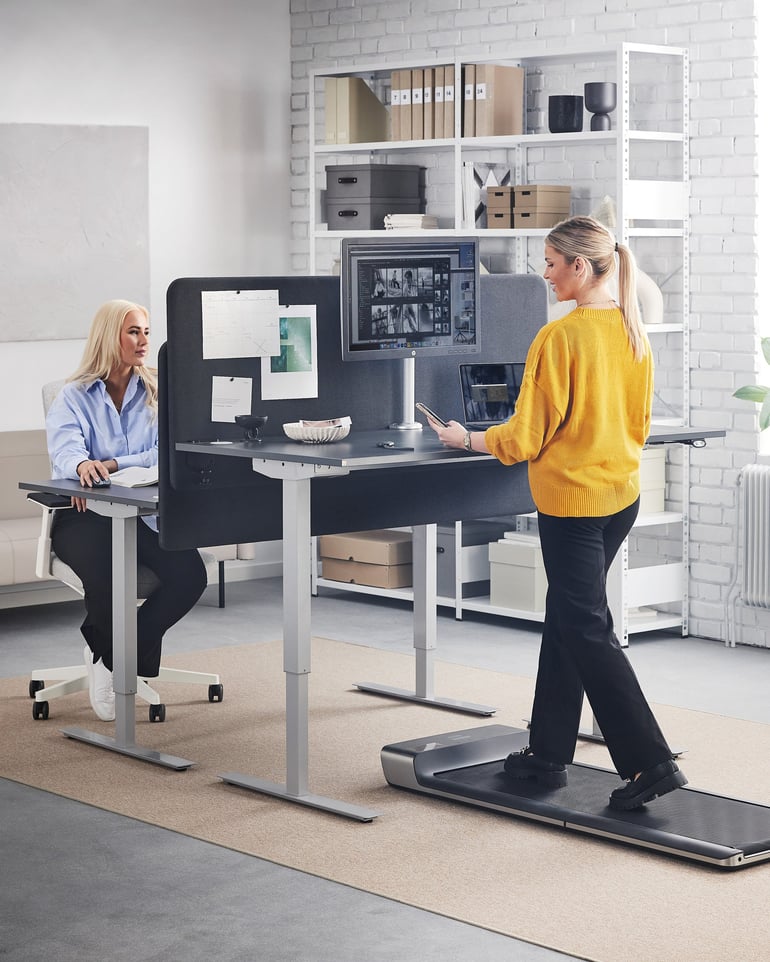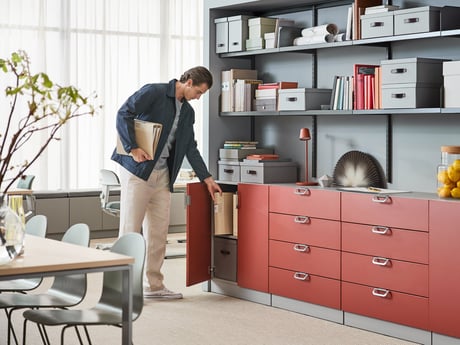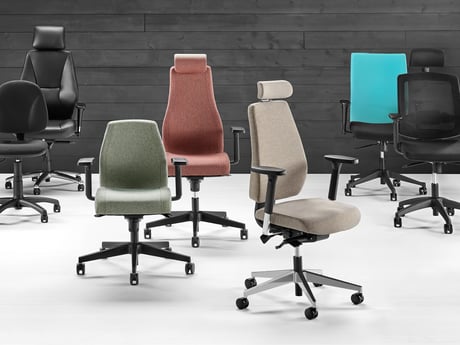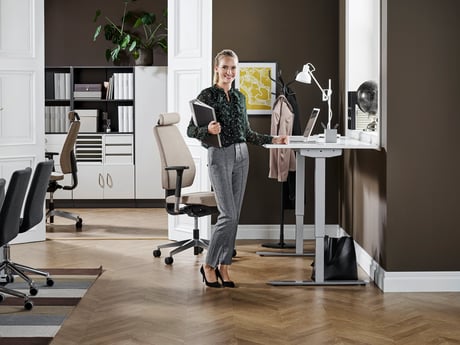- AJ Products UK
- Blog: Tips to Inspire Happiness at Work
- Ergonomics in the workplace
- The benefits of height adjustable desks
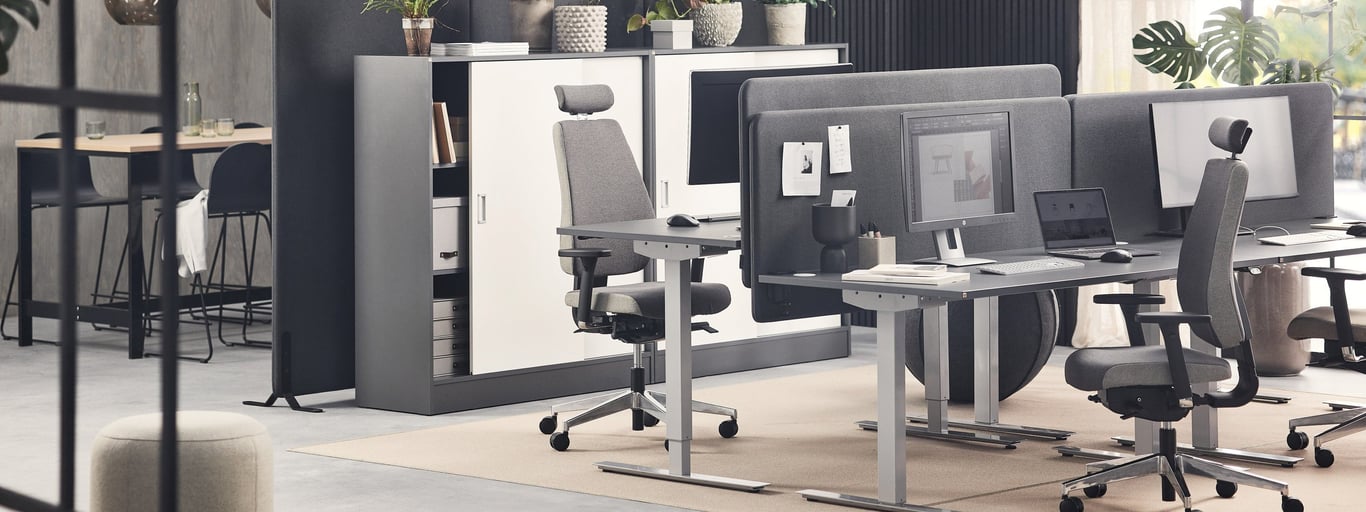
The benefits of height adjustable desks

Why choose a height-adjustable desk?
Standing while working isn’t just a trend, it’s an important step toward a healthier and more productive workday. Height-adjustable desks let you switch easily between sitting and standing, activating muscles in your legs and back, improving circulation, and helping prevent musculoskeletal issues.
“Combining standing and sitting work will have positive effects on most people's health,” says Anna Millbourn Olander, ergonomist and physiotherapist. “The body uses around three times as much energy when standing as when sitting. Even a few hours of standing a day can help burn calories and reduce the risk of lifestyle diseases.”
Research shows that prolonged sitting increases the risk of cardiovascular disease, type 2 diabetes, obesity, and poor posture. While gym workouts and healthy eating help, they don’t fully counteract the effects of sitting for hours on end. By varying your posture throughout the day, you can maintain better energy levels and improve overall wellbeing.
"Taking a walk on your lunch hour is also recommended", she adds. "At the same time it must be stressed that it is by no means forbidden to sit in the office, you have to vary your posture and sometimes it is even a good idea to sit down for a while to avoid putting too much pressure on the knees and feet", says Anna.
Are height-adjustable desks a requirement in the workplace?
Even when not legally required, providing employees with sit-stand desks makes good business sense. Many international companies have begun introducing them as part of wider wellbeing initiatives, and more employers in the UK are now exploring the benefits for their own teams. Beyond supporting health, adjustable desks can help reduce absenteeism linked to back pain and encourage higher engagement at work.
There are challenges: traditional office layouts and furniture are designed for sitting, and updating interiors can be costly. Additionally, not all employees may initially want to stand. The solution in these cases is flexibility: providing height-adjustable desks allows staff to choose when to stand, encouraging healthier habits without pressure or disruption.
How high should a height-adjustable desk be?
Correct desk height is key for comfort and ergonomics. Whether sitting or standing, your elbows should rest at roughly a 90-degree angle on the desk surface. Standing desks should relieve strain on your back, neck, and legs, while seated work should avoid overloading knees and feet.
It’s also important to vary posture regularly. Don’t sit for more than two hours continuously; take breaks to stretch, walk, or simply change position. You don't necessarily have to sit still on a classic office chair. Take a look at our selection for active sitting options - and keep your body moving while you are sitting.
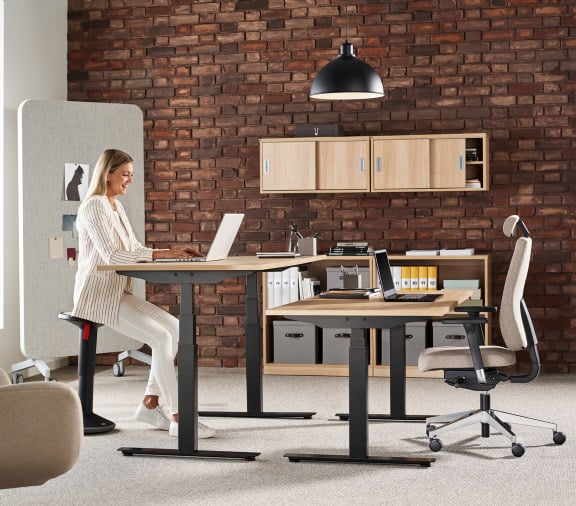
Making the most of your height-adjustable desk
A well-planned workspace maximises the benefits of standing and sitting. Consider layout adjustments that encourage gentle movement, such as centrally located communal kitchens or standing meeting areas. Ergonomic chairs, height-adjustable meeting tables, and other accessories can further reduce strain and make transitions between sitting and standing effortless.
If you’re considering making the switch, AJ Products can help. We supply businesses across the UK with electric height-adjustable desks, ergonomic chairs, canteen tables, and a wide range of workplace furniture – all designed to support wellbeing and productivity. Explore our range online or get in touch for advice on creating a healthier working environment.
